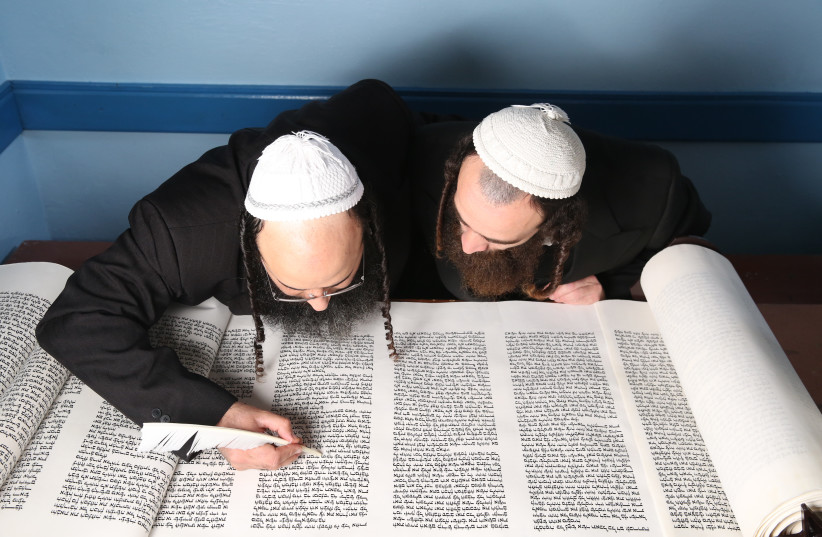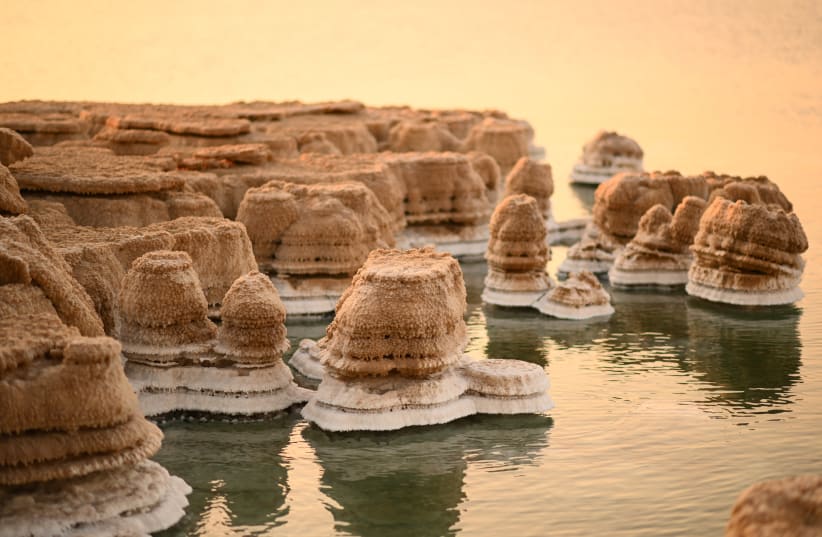Of the Five Books of Moses, the most difficult to relate to and comprehend for many is the third book, the Book of Leviticus, with its focus on the sacrificial system.
That difficulty is compounded by the fact that the system was based on the Mishkan/Tabernacle during our 40 years in the desert, and then the Temple on Mount Moriah in Jerusalem.
For thousands of years, neither has existed. So we are confronted with a system that is both hard to fathom and no longer present.
An introduction to the various sacrifices and offerings
And yet is it so far away? In this week’s parasha, Vayikra, we are introduced to various sacrifices and offerings – animals, birds, and grain. We read this week:
“When anyone brings a grain offering to the Lord, their offering is to be of the finest flour. They are to pour olive oil on it, put incense on it and take it to Aaron’s sons, the priests. The priest shall take a handful of the flour and oil, together with all the incense, and burn this as a memorial portion on the altar, a food offering, an aroma pleasing to the Lord. The rest of the grain offering belongs to Aaron and his sons; it is a most holy part of the food offerings presented to the Lord” (Lev. 2:1-3).
“When anyone brings a grain offering to the Lord, their offering is to be of the finest flour. They are to pour olive oil on it, put incense on it and take it to Aaron’s sons, the priests. The priest shall take a handful of the flour and oil, together with all the incense, and burn this as a memorial portion on the altar, a food offering, an aroma pleasing to the Lord. The rest of the grain offering belongs to Aaron and his sons; it is a most holy part of the food offerings presented to the Lord”
Leviticus 2:1-3

Grain was also used in the shewbread – 12 loaves, representing the 12 tribes of Israel, that were divided into two rows of six loaves on a golden table called “the table of shewbread” (Ex. 25:30; Lev. 24:5-9) and were changed every Shabbat (Lev. 24:8).
The prophet Ezekiel mentioned the shewbread: “The altar was of wood, three cubits high, and its length two cubits, and so its corners; and its length, and its walls were also of wood, and he said to me: This is the table that is before the Lord” (Ez. 41:22).
In discussing this verse, the Talmud asks why does the sentence begin by talking about an altar but concludes by talking about a table? Rabbi Yohanan and Rabbi Elazar said that while the Temple stood, the altar brought about atonement for the individual; but with the Temple no longer standing, a person’s table brings about that atonement (Menahot 97a; also Hagiga 27a with Rabbi Yohanan and Reish Lakish).
In that creative move, which was essential to maintaining the existence of the Jewish people, the rabbis replaced the Temple and the sacrificial system with our kitchen table. After the destruction of the Temple in 70 CE, and the massive defeat of the Jews by the Romans in the wake of the Bar-Kochba revolt (132-135 CE), there was a very good chance the Jewish people would disappear from history and the face of the Earth.
In “Jewish Liturgical Responses to the Roman Destruction of the Temple,” Rabbi Ruth Langer explains: “The rabbis taught a liturgical system that fulfilled the most important functions of Temple rituals but in new, purely verbal forms. They expected universal Jewish participation in daily verbal prayer, corresponding to the times of the lost Temple’s sacrifices (m. Ber. 4:1, 3) and fulfilling their covenantal function.... Atonement for many sins, though, could be sought every weekday, through the regular liturgy. Thus, the most significant Temple functions were modified or transferred, providing Jews with ritual continuity” (The Yale ISM Review, vol. 6.1, spring 2021).
In confronting the stark realities and traumas of the first and second centuries CE, the rabbis made two adjustments – the home and prayer became a substitute for sacrifices. In addition, a strong connection to the land, the seasonal environmental cycle of the Land of Israel, was woven into the daily, weekly and annual liturgy of prayer and the holidays, which the Jewish people carried with them in exile.
In less than two weeks we will celebrate Passover. On its first day, in the Amida prayer, we will switch from saying the prayer for rain to reciting the prayer for dew. This makes complete sense for someone living in the Land of Israel; but for someone living in some other part of the world, there could be a disconnect.
However, if you want a person, a community, to maintain a strong connection to the land while living outside of its borders, that is what you do. That affinity with the Land of Israel was key to maintaining Jewish identity over 2,000 years, and it enabled the Jewish people to carry the seed of return to the land, a religious seed that contained within it a national identity.
The litmus test of the health and strength of a Jewish community is not how full or big synagogues may be (though they do have an important role to play) but rather what takes place within the Jewish home. Particularly, is there daily study, alongside home rituals and other forms of Jewish observance, including Shabbat and holidays? The rabbis understood this dynamic when, as mentioned above, they replaced the altar of the Temple in ancient Jerusalem with our kitchen table.
How did they do that?
Sorel Goldberg Loeb and Barbara Binder Kadden illustrate:
“Many traditional Jewish practices at mealtimes are based on the ceremonies surrounding the sacrifices. After reciting Hamotzi, we salt our bread before eating it, because of the admonishment to the priests to salt all offerings (Lev. 2:13).
“We wash our hands before breaking bread, as the priests did before bringing a sacrifice. The custom of covering the knife during Birkat Hamazon is explained by the fact that a knife, which is a sign of war, was not allowed to touch the altar, which is a sign of peace” (Loeb & Kadden, Teaching Torah, p. 133).
Salt has been used as a preservative since the days of ancient Egypt. In the Book of Numbers (18:19), we read about a “covenant of salt” (brit melah), with salt conveying a sense of permanence. That has always been the goal and challenge – preserving the Jewish people. As we know from nature, evolution and adaptation are the key to achieving that eternal perpetuation. But it is not preservation for the sake of preservation – the rabbis were always concerned with an ethical and communal layer, even as they adapted to new realities.
“Once, Rabban Yohanan ben Zakkai left Jerusalem, and Rabbi Yehoshua followed after him. And he saw the Holy Temple destroyed. Rabbi Yehoshua said: Woe to us, for this is destroyed – the place where all of Israel’s sins are forgiven! Rabbi Yohanan said to him: My son, do not be distressed, for we have a form of atonement just like it. And what is it? Acts of kindness, as it says, ‘For I desire kindness, rather than burnt offerings’” (Hosea 6:6) (Avot D’Rabbi Natan 4). ■
The writer, a Reconstructionist rabbi, is rabbi emeritus of the Israel Congregation in Manchester Center, Vermont. He teaches at the Arava Institute for Environmental Studies on Kibbutz Ketura and at Bennington College.
